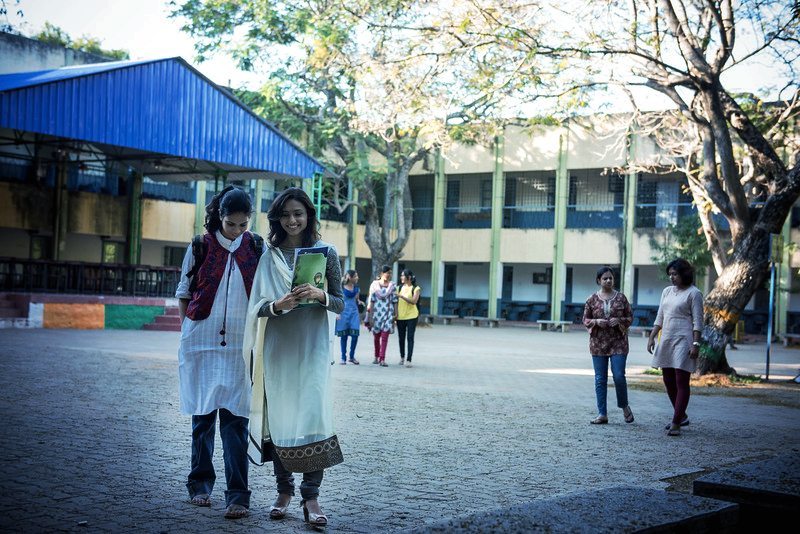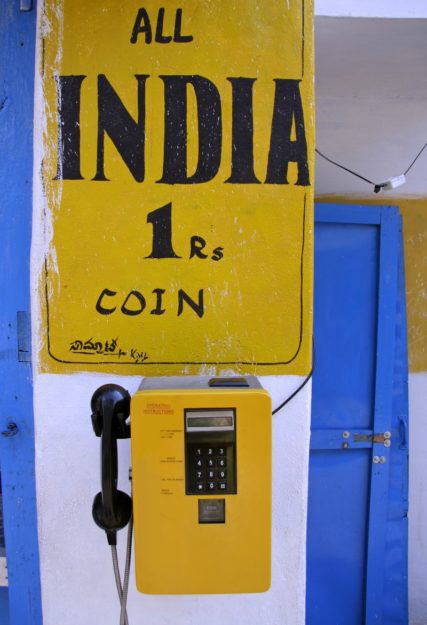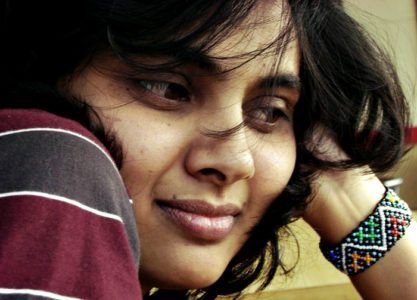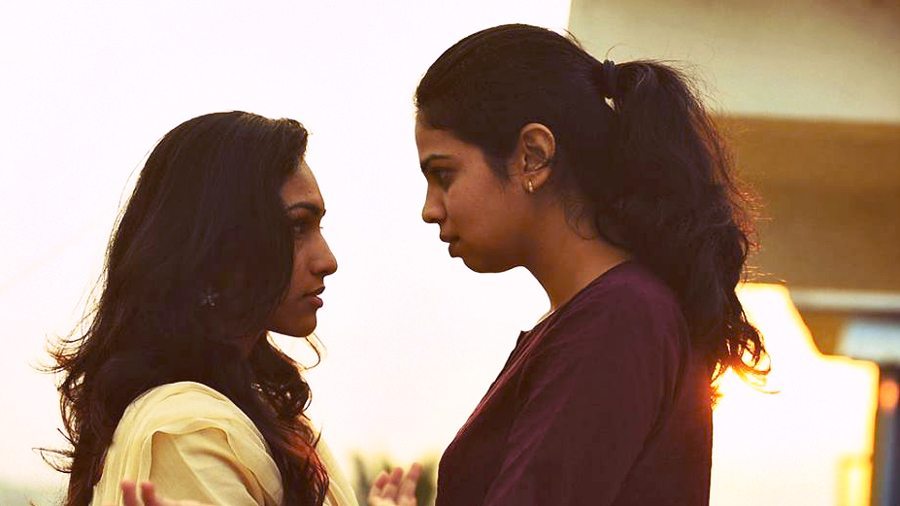What do you think of when we talk about romance today? Tinder, Grindr, Whatsapp, OkCupid? TVF Permanent Roommates, a webseries about an unmarried couple living together without it being a big deal? Friends with benefits and bootycalls?
In 2016, access to smartphones, apps and the internet lends us millennials a certain degree of autonomy and open-mindedness about the changing paradigms of romance. It also enables us to have private lives online — so much so that it is almost impossible for us to imagine having privacy outside the confines of the digital world. Have you ever wondered then: how did romance happen in the pre-internet ‘dark days’ (which are technically not that long ago)? Especially if the two people in love were not in a traditional, heteronormative relationship? What if two women were in love instead? How would their love blossom when the concept of privacy, or acceptance of their relationship, was virtually non-existent?
Before mobile phones, the sole landline would be in the living room with family members hovering around. The ‘Other’ Love Story highlights these differences, and they reflect how the idea of privacy has changed in modern urban society
These are some questions director Roopa Rao raises in her webseries JLT’s The ‘Other’ Love Story (TOLS). Set in Bengaluru in the late 1990s, the 12-episode series is about two girls who fall in love through landline telephones and diary entries. The series premiered on YouTube on August 27, 2016 and aired one episode a week every Friday, concluding on November 4.
It is the first Indian webseries about same-sex love. Already, the path-breaking show has bagged six nominations in the upcoming NYC Webseries Fest (November 10-12) including for best director and best actor nominations for both leads.
Ironically, releasing it online was a last resort for Rao. “It was very difficult for me to find producers for the film, as they would back out as soon as they heard the concept. Most were worried about whether ‘there would be sex in it.’ Even when I said I had no plans of including any, they backed out,” she says. Finally, she decided to bear some of the cost herself. It was then partially crowdfunded on Wishberry in January with major production costs being borne by Harini Daddala of London-based production house Justlikethat Films.

The story spans two years between 1998 and 2000 in the lives of protagonists Aachal and Aadya (played by Shweta Gupta and Spoorthi Gumaste) who are neighbours. It opens with Aachal preparing to leave for the US for a few months to live with her aunt, a plan devised by her family, which disapproves of her relationship with Aadya. The series goes back and forth in time, between the present day when Aachal is about to leave for Mumbai to catch her flight, and the months leading up to this during which the two young women fell in love.
A time of payphones and BSNL landlines
“When you have lived through such an intense period in your life, the memories of it never really leave you. That is what I wanted to capture in The ‘Other’ Love Story,” says Rao.
Aachal comes across as a social person, used to speaking on the phone with her friends, as she asks for Aadya’s phone number at their very first meeting. “When I was growing up, I wasn’t very comfortable with chatting on the phone. I preferred meeting people personally,” Rao says. Maybe she invested the character of Aadya with some of these personal quirks, because in the show, Aadya is surprised when Aachal calls her the same night. It is a bit of a novelty for her — getting a phone call after 10 pm.
Before mobile phones came along and made communication so ubiquitous and commonplace, the sole landline phone would be in the living room with parents, siblings and grandparents always hovering around. The show highlights these differences between ‘then’ and ‘now’, and they act as subtle commentary on how the landscape of privacy has changed in modern urban society.

The two protagonists spend a lot of time meeting outdoors: at bus stops, in Aachal’s college, or even at a mutual friend’s home. Payphones on the street corner serve as the last resort when they need to speak to each other but cannot meet. On one occasion, we see Aachal rushing to call Aadya from the yellow box with black buttons hanging in the local kirana shop after having a disagreement with her mother about their relationship. She inserts one coin to connect the call, and before he knows it, the beep-beep of the final seconds sounds. Inserting another coin, she prolongs the call which is only just enough to let Aadya know that she is to leave for Mumbai the next day. “One day with you, I’m just dying to have it. Can you come?” she says, before the line goes dead and she has no more coins to spare.
The public becomes the private
The visuals accompanying the opening credits set the tone for much of TOLS, juxtaposition of the public and the private. You see images of tree barks and rocks (reminiscent of Bangalore’s Lalbagh and Cubbon Park), even classroom desks — all favourite canvases for new lovers — that are etched with ritual declarations of love. Of a man for a woman. In public.
Aadya’s personal diary is introduced as a significant motif in the movie. The dates in her diary entries tell us about the passage of time, also giving us a glimpse of Aadya’s own feelings at that point
And then the final image: Aachal, Aadya, and a heart. Names written on the frayed blank pages of a private journal are scratched out in haste, blotting them out of existence. As if asking in despair: is there no space for this ‘other’ love story even within the pages of a personal diary?
Aadya’s personal diary is thus introduced as a significant motif in TOLS. The dates in her diary entries tell us about the passage of time, also giving us a glimpse of Aadya’s own feelings at that point. In the series, this is perhaps the only thing that remains private, in the sense that no one but Aadya and the viewers are its readers.

Ironically, public spaces become the safest and most private for the two young women. Even their first kiss happens on the terrace of Aachal’s home and not inside a room. That was how it was in the 90s, Rao recounts. “There weren’t too many options. If you had to meet someone you’d do it by bunking class and going to theatres or restaurants. After college hours, you’d either make up an excuse to go to the terrace or see someone off to the gate of your home. There was a lot of minute negotiation.”
Much of the detailing about the 90s in the series comes from Rao’s own memories of her teenage years and love life growing up in the decade. “I still feel like I’m stuck in those times. We used to write many letters and exchange greeting cards, all of which I have still preserved. I wanted to recreate that time and those experiences,” she says. In fact, the greeting cards that Aachal and Aadya are shown to share in the series are from Rao’s personal treasure trove.
Also missing are computers. Instead, we find Aadya busy preparing for her exams by reading through her fat statistics textbook. The internet, however, isn’t completely unheard of. As Aachal leaves for Mumbai, her friends ask her to “email them” on their “Indiatimes email ID.”
Rao has been careful to pay close attention to period details — whether it’s old box-type televisions and Zee TV’s signature “agla karyakram” announcement, or hoardings of Sudeep’s Huchha, a Kannada film which was due to be released in April 2000, just a week after the day Aachal leaves for Mumbai.
Noting the significant absences
Nowhere in the series is there an attempt to label the relationship between Aadya and Aachal. They only know that they are in love and are trying to navigate the confusions and doubts running in their minds by confiding in each other. They don’t even say the words “I love you” to each other at any point. The word ‘lesbian’ never enters into any of their conversations. TOLS also debunks its own title by drawing out, with much sensitivity and subtlety, how organic their love is. It is not the “other” that’s important. It’s just a love story.
Rao says that this was a conscious decision. “At the end of the day, what it is, is love. Isn’t that enough? Two people are in love and they just happen to be women. What happens between two people in their bedrooms is their business. One cannot take just one aspect of someone’s life and define them solely with it.”

In the late 90’s, homosexuality and gender-fluidity were even less understood than they are now. There was no active LGBTQ movement in india, as it exists today. In 1996, Deepa Mehta’s Fire was released amidst much criticism from both conservative right-wing groups and feminists, albeit for different reasons. Rath Vanita and Saleem Kidwai’s seminal work Same Sex Love in India, which explored the presence of same sex love in Indian mythology and literature, was also published only in 2000. So perhaps it would not be wrong to say that women might have only expressed their love for each other within the pages of private diaries and love letters, which were kept hidden. After all, a record only exists if it is visible to the public eye. Much like Facebook statuses and tweets today?
Although people living in cosmopolitan cities like Mumbai and Bengaluru may be better empowered today to speak about their private and unique experiences of love and sex, in much of India the scenario isn’t that different, really, from the 1990s. Rao says she tried out an online dating site, and kept changing her partner preferences to see how people would respond. The experience gave her an insight into the dynamics of same-sex relationships in tier-2 cities in states like Gujarat. “There is a desperation in them to find someone who is like them, someone who can help them figure out what is going on. This made me feel more than anything that this story needs to be told, so we can reach out to these people and provide some affirmation,” says Rao.
Subscribe to FactorDaily
Our daily brief keeps thousands of readers ahead of the curve. More signals, less noise.
To get more stories like this on email, click here and subscribe to our daily brief.
Lead illustration: Nikhil Raj P Update: Edited on Nov 10, 2016 at 3.35 pm to add that both lead actors have been nominated in the 'best actor' category at the NYC Webseries Fest, and that the film was partially crowdfunded (an earlier version did not have the word 'partially').








